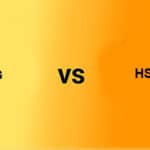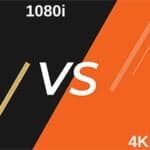Analog Tuner: The Classic Approach
What is an Analog Tuner?
- An analog tuner is used in electronic devices such as radios and televisions to receive and tune in to analog radio or TV signals.
- It relies on continuous waveforms to represent information and operates by manipulating electronic components to select a specific frequency or channel.
How Does an Analog Tuner Work?
- Analog tuners use analog circuits, such as inductors and capacitors, to tune into specific frequencies.
- They receive a broad range of frequencies and filter, amplify, and demodulate the selected signal to extract the audio or video content.
- The tuning process in analog tuners is continuous, allowing gradual adjustments to find the desired station or channel.
Characteristics of Analog Tuners
- Continuous Tuning: Analog tuners offer continuous tuning capabilities, allowing for fine adjustments to find the best reception.
- Limited Precision: Analog tuners have limited precision in tuning to exact frequencies, which can result in some degree of signal interference and fuzziness.
- Susceptible to Interference: Analog signals are vulnerable to interference from other electronic devices and environmental factors, leading to static and poor signal quality.
- Non-digital Display: Analog tuners use analog dials or displays to represent the tuned frequency, making it challenging to read the exact value.
- Phasing Out: Analog tuners have become less common as digital broadcasting has become the standard.
Digital Tuner: The Modern Advancement
What is a Digital Tuner?
- A digital tuner is used in modern electronic devices to receive and tune in to digital radio or TV signals.
- It converts digital signals into audio or video content, offering improved signal quality and additional features.
How Does a Digital Tuner Work?
- Digital tuners convert incoming digital signals into audio or video content through a process known as demodulation.
- These tuners employ advanced encoding and decoding techniques to reproduce the received digital signals faithfully.
- Digital tuners include features like automatic channel scanning and digital channel information display.
Characteristics of Digital Tuners
- Precise Tuning: Digital tuners offer precise tuning to specific frequencies or channels, resulting in clear and interference-free reception.
- Resilience to Interference: Digital signals are less susceptible to interference, providing a more stable and reliable viewing or listening experience.
- Digital Displays: Digital tuners feature digital displays that show the channel or frequency, making it easy for users to identify the selected station.
- Additional Features: Digital tuners may include electronic program guides (EPGs), time-shifting, and multimedia capabilities.
- Standard for Modern Broadcasting: Digital broadcasting has become the standard in many countries, leading to the widespread adoption of digital tuners.
Key Differences
Now that we have explored the basics of analog and digital tuners let’s delve into the key differences between these two technologies:
Signal Representation
- Analog Tuner: Analog tuners receive and process continuous waveforms to represent information. They rely on amplitude modulation (AM) and frequency modulation (FM) for radio and analog television signals for TV.
- Digital Tuner: Digital tuners receive and process discrete digital signals encoded information representations. They use techniques like binary encoding for audio and video content.
Tuning Process
- Analog Tuner: Analog tuners use analog circuits to tune specific frequencies continuously. Users adjust a dial or knob to fine-tune the reception.
- Digital Tuner: Digital tuners employ digital signal processing techniques to accurately select specific digital channels or frequencies. They feature automatic scanning for available channels.
Signal Quality
- Analog Tuner: Analog signals are susceptible to interference and degradation, resulting in potential issues such as static, noise, and ghosting in TV broadcasts.
- Digital Tuner: Digital signals offer superior signal quality and resilience to interference. They provide crisp and clear audio and video with no ghosting or static.
Precision
- Analog Tuner: Analog tuners have limited precision in tuning, which can lead to imprecise tuning and the need for fine adjustments to optimize reception.
- Digital Tuner: Digital tuners provide precise tuning to exact frequencies or channels, ensuring accurate and reliable reception.
Display
- Analog Tuner: Analog tuners use analog displays, such as dials or meters, to represent the tuned frequency. These displays may lack precise numerical information.
- Digital Tuner: Digital tuners feature digital displays that show the selected channel or frequency in a clear and easily readable format.
Channel Selection
- Analog Tuner: In analog tuners, users manually adjust the tuning dial or knob to select a channel or frequency.
- Digital Tuner: Digital tuners offer automatic channel scanning, allowing users to discover and select available channels quickly.
Features
- Analog Tuner: Analog tuners lack advanced features like electronic program guides (EPGs), time-shifting, or multimedia capabilities.
- Digital Tuner: Digital tuners may include features such as EPGs, time-shifting (recording and playback), multimedia playback, and interactive services.
Broadcasting Standards
- Analog Tuner: Analog broadcasting standards, such as AM and FM for radio and analog TV standards (e.g., NTSC, PAL, SECAM), have been widely used but are gradually being phased out.
- Digital Tuner: Digital broadcasting standards, such as DAB (Digital Audio Broadcasting) for radio and digital TV standards (e.g., ATSC, DVB-T/T2, ISDB-T), have become the modern standard for broadcasting in many regions.
Transition
- Analog Tuner: Analog tuners have been gradually replaced by digital tuners as countries transition to digital broadcasting.
- Digital Tuner: Digital tuners are the standard for modern broadcasting and have largely replaced analog tuners in new electronic devices.
Table: Summary of Differences
For a concise overview, here’s a summary of the key differences between analog and digital tuners:
| Aspect | Analog Tuner | Digital Tuner |
|---|---|---|
| Signal Representation | Uses continuous waveforms (analog) | Processes discrete digital signals |
| Tuning Process | Continuous tuning with analog circuits | Accurate tuning with digital processing |
| Signal Quality | Susceptible to interference | Resilient to interference |
| Precision | Limited precision | Precise tuning to exact frequencies |
| Display | Analog displays (e.g., dials) | Digital displays (numeric) |
| Channel Selection | Manual adjustment | Automatic channel scanning |
| Features | Limited features | Additional features (EPG, time-shifting, multimedia) |
| Broadcasting Standards | Legacy standards (e.g., AM, FM, NTSC) | Modern digital standards (e.g., DAB, ATSC, DVB-T/T2) |
| Transition | Phasing out | Standard for modern broadcasting |
Conclusion
Analog and digital tuners represent two distinct eras in the history of broadcasting and electronics. Analog tuners, with their continuous tuning and analog signal processing, played a significant role in delivering radio and television content for decades. However, they were limited in signal quality and susceptibility to interference.
In contrast, digital tuners ushered in a new era of broadcasting with their precise tuning, resilience to interference, and superior signal quality. They have become the standard for modern broadcasting, offering additional features and functionalities that enhance the user experience.
As technology continues to evolve, the transition from analog to digital has improved the quality of audio and video content and expanded the possibilities for interactive and multimedia services. While analog tuners may still hold a place in nostalgia for some, digital tuners have become the norm, providing viewers and listeners with a more reliable and feature-rich broadcasting experience.

























